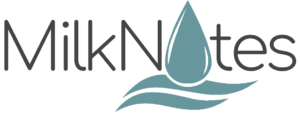How do you organize a lactation report to a provider?
by Liz Flight May 2021
Did you ever wonder about charting? Years ago, both doctors and nurses wrote a lengthy narrative description of a patient’s condition, treatment, and their responses to any treatments in large paper files. These included records of vital signs, mental status, a description of each of the patient’s “systems” and such. When charting nurse’s care, the SOAP note was a common format for inpatient charting episodes in succession. With the advent of electronic charting, narrative charting has become a lost art. MilkNotes has taken the “old” method of charting and brought it up to date!
Have you wondered how to best organize the information without spending an hour writing?
The initials, “SBAR” stand for Situation, Background, Assessment, and Recommendations. The acronym was initially adapted from the fields of Navy submarine and aviation to improve communication and prevent errors. In lactation, we use it to describe an encounter with the client and for clear and concise communication with the providers. It is perfectly suited for outpatient care as it can encompass and synopsize the history and background to provide the backbone for the assessment and plan.
SBAR Categories
- Situation: State the problem
- Background: History
- Assessment: Observation of the issue related to situation and background
- Recommendations: What is needed and how urgently
To put that into a more medical context, it’s much like SOAP (Subjective, Objective, Assessment, Plan) The “Situation” is the parent’s perception or description of the problem. “Background” includes medical history, symptoms, and birth history. “Assessment” describes the observation of the feeding and the actual physical assessment of parent and child. “Recommendations” include the patient care plan, referrals to other ancillary providers, and links to educational handouts and URLs. This is all pulled together in the Provider Report for you which is automatically signed, dated and timed.
In comparison, the SOAP method is designed for a “Subjective” sentence which is that the patient said or described about what brought them in; i.e., “My nipples hurt when s/he nurses.” “Objective” is a description of everything that you see, such as a description of the wounds, the baby in latch position, and the overall feeding. “Assessment” is really only a sentence that is comparative to a nursing diagnosis; “Damaged nipples secondary to shallow latch.” Finally, the “Plan” is a numbered list of what should be done to alleviate the problem. This is followed by a signature, date and time.
In an outpatient setting, the SBAR method of recording a parent/child encounter makes it easy to communicate with the other providers and is a legal record of your actions. The unique feature within MilkNotes charting is that the parent and child have individual “charts” that are linked by the date and time of the “encounter” for ease of reporting on them individually or in a combined chart. You still document on both at the same time which saves time by preventing repetition of information or duplication your charts.
Electronic charting with MilkNotes simplifies the repetitive tasks so that LCs can put more focus on their care for families. It’s a high-tech solution for a high touch profession.
